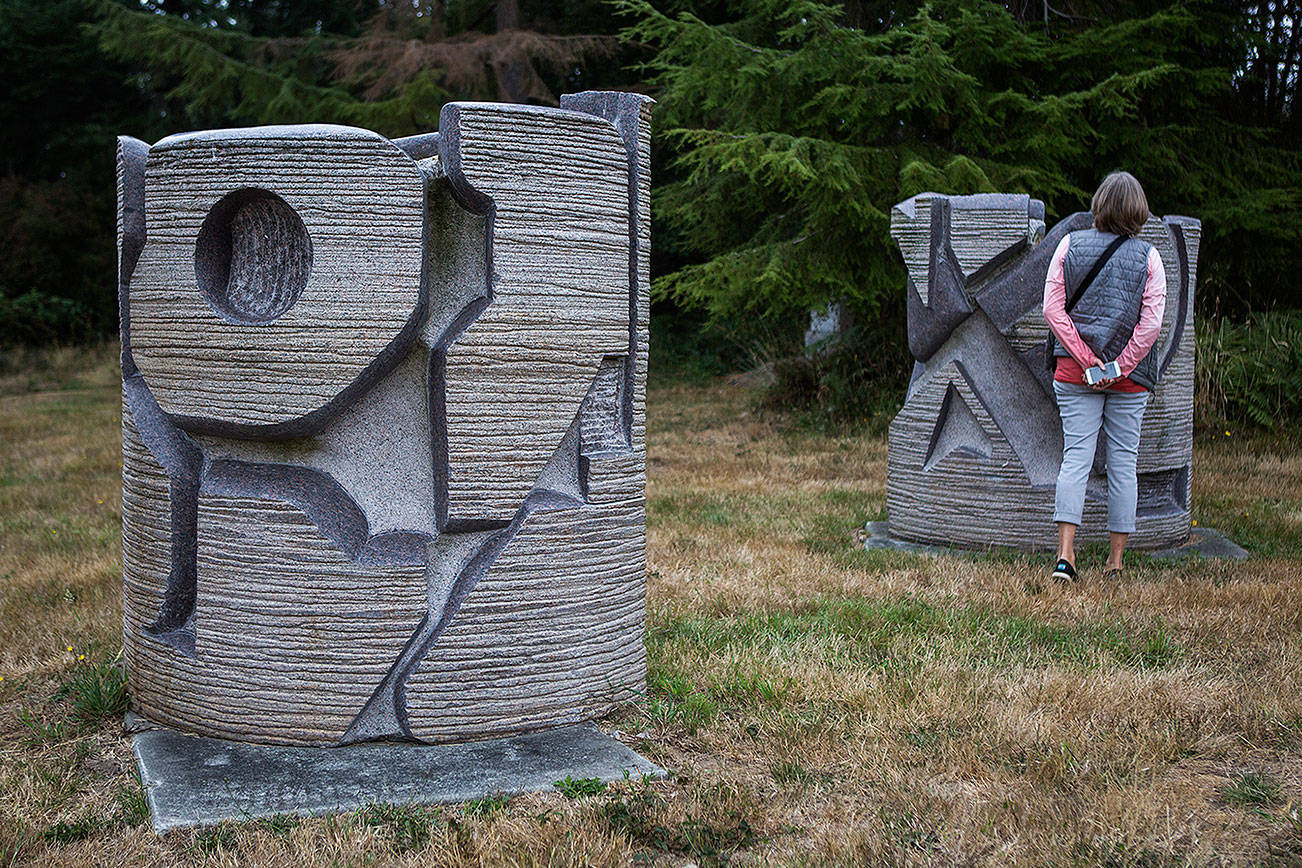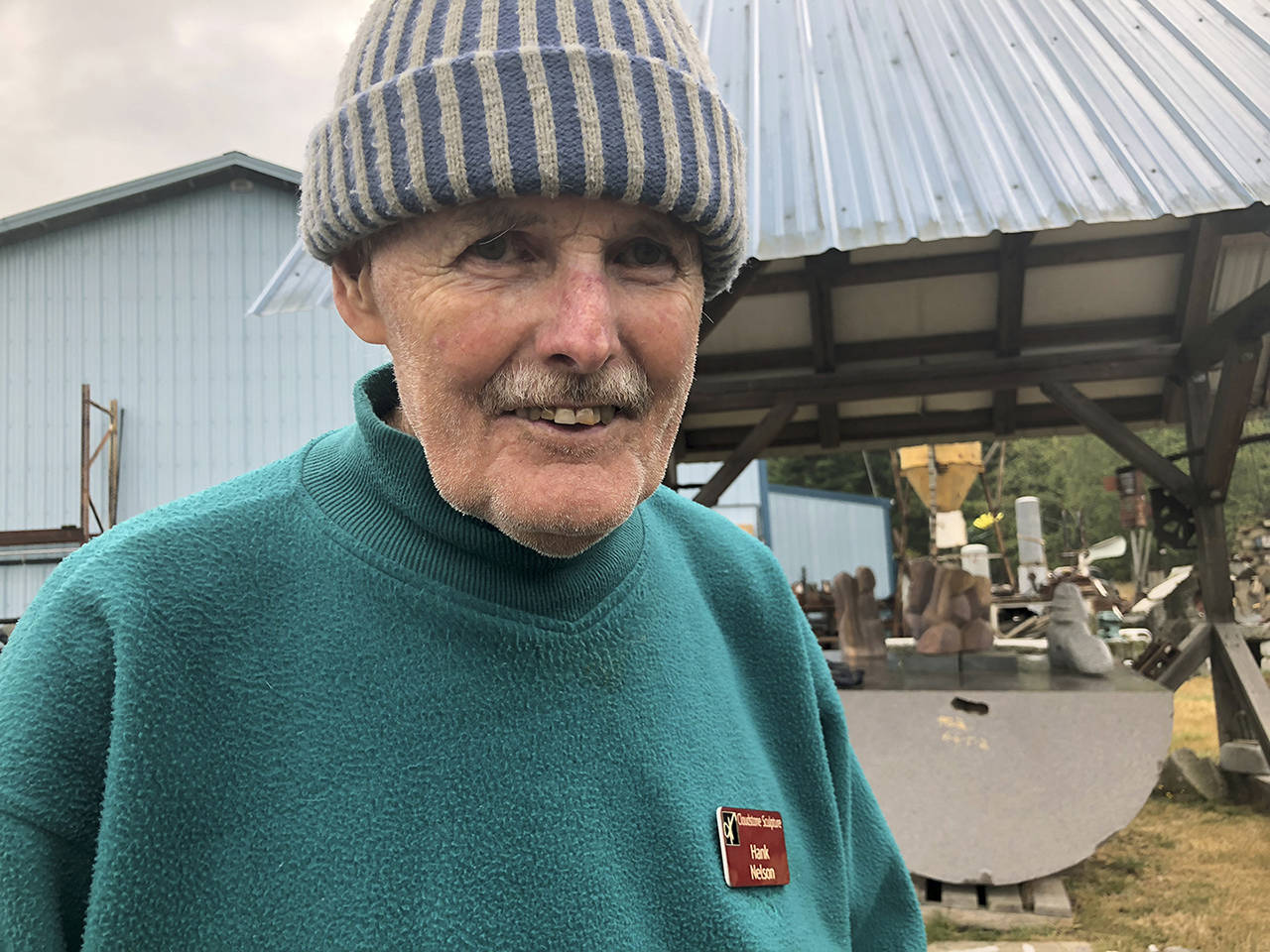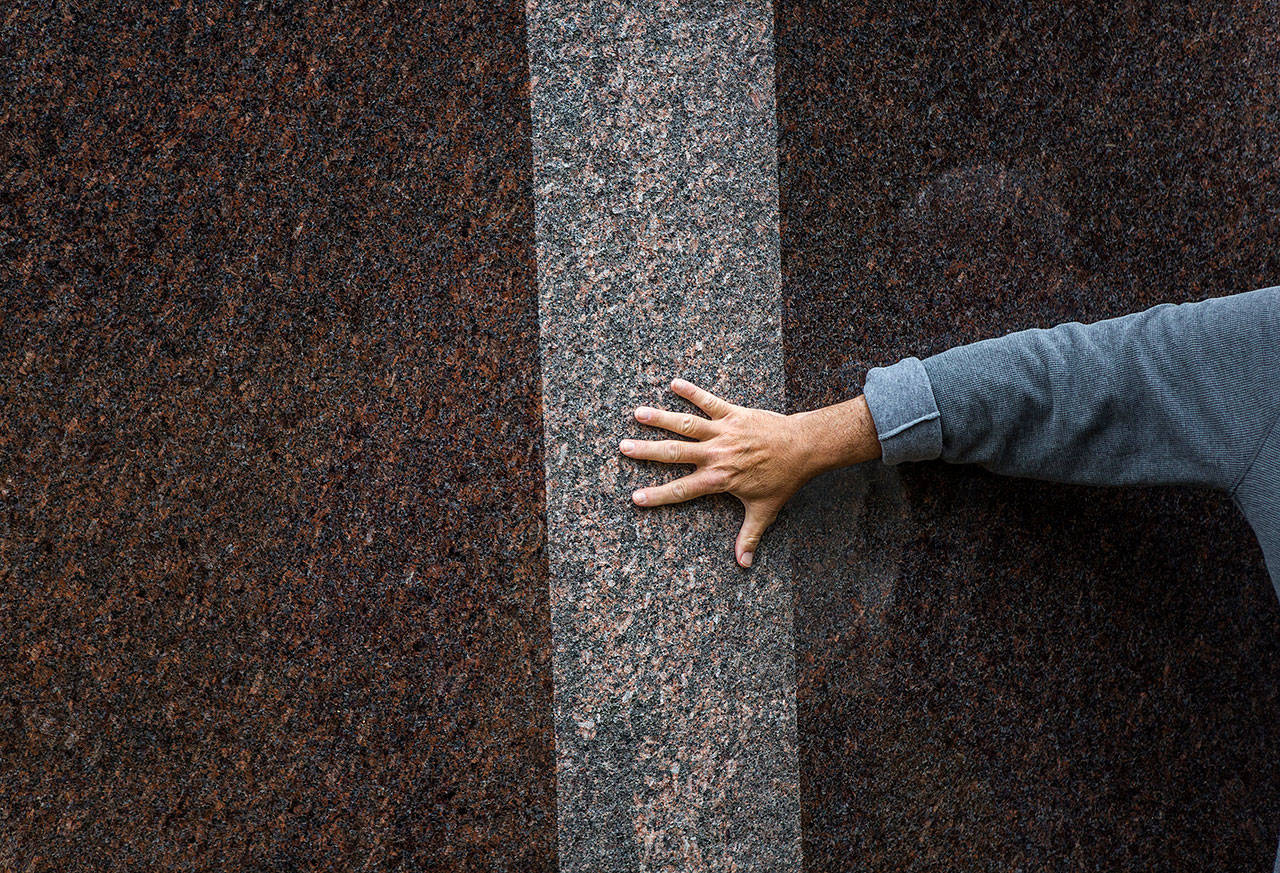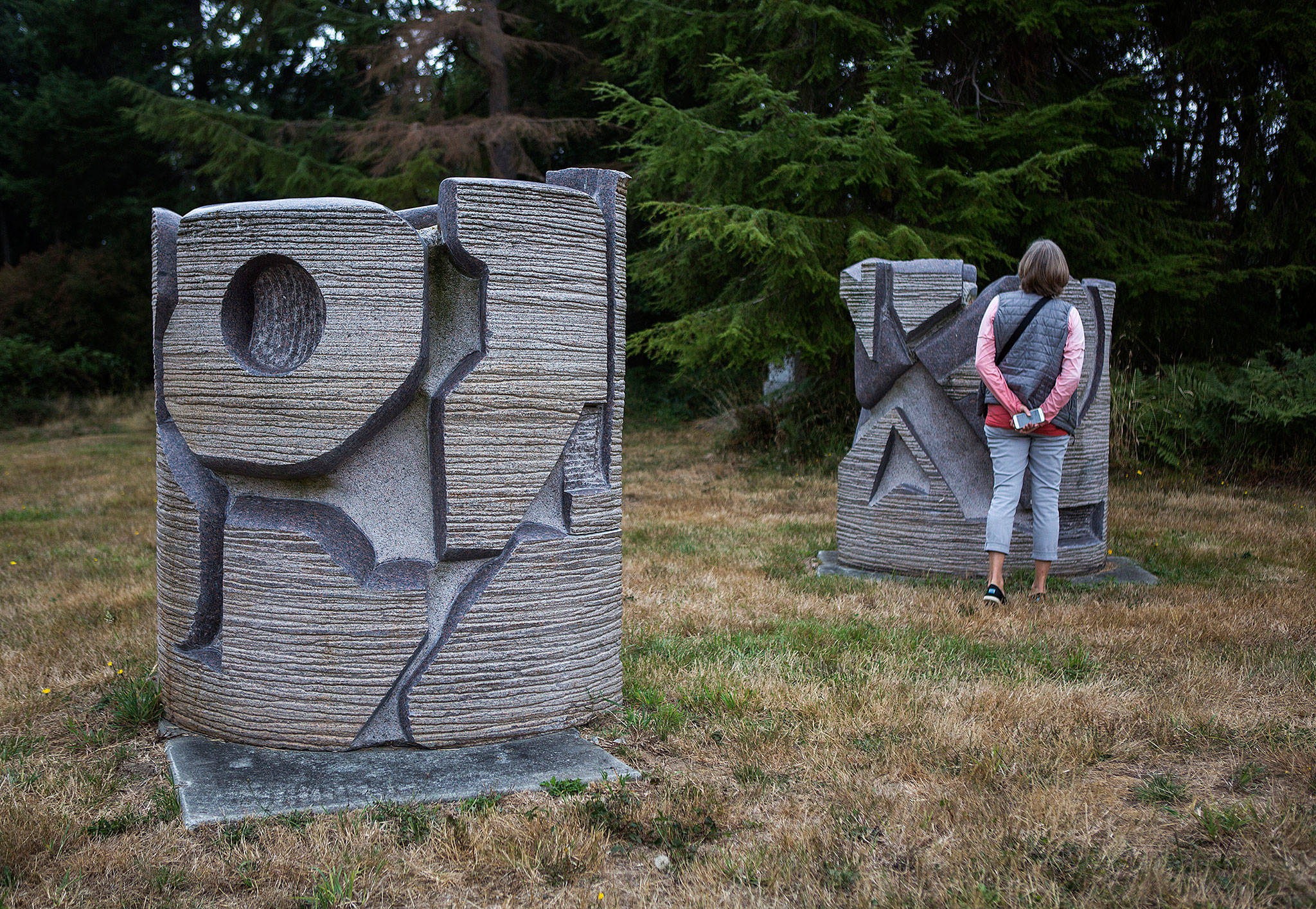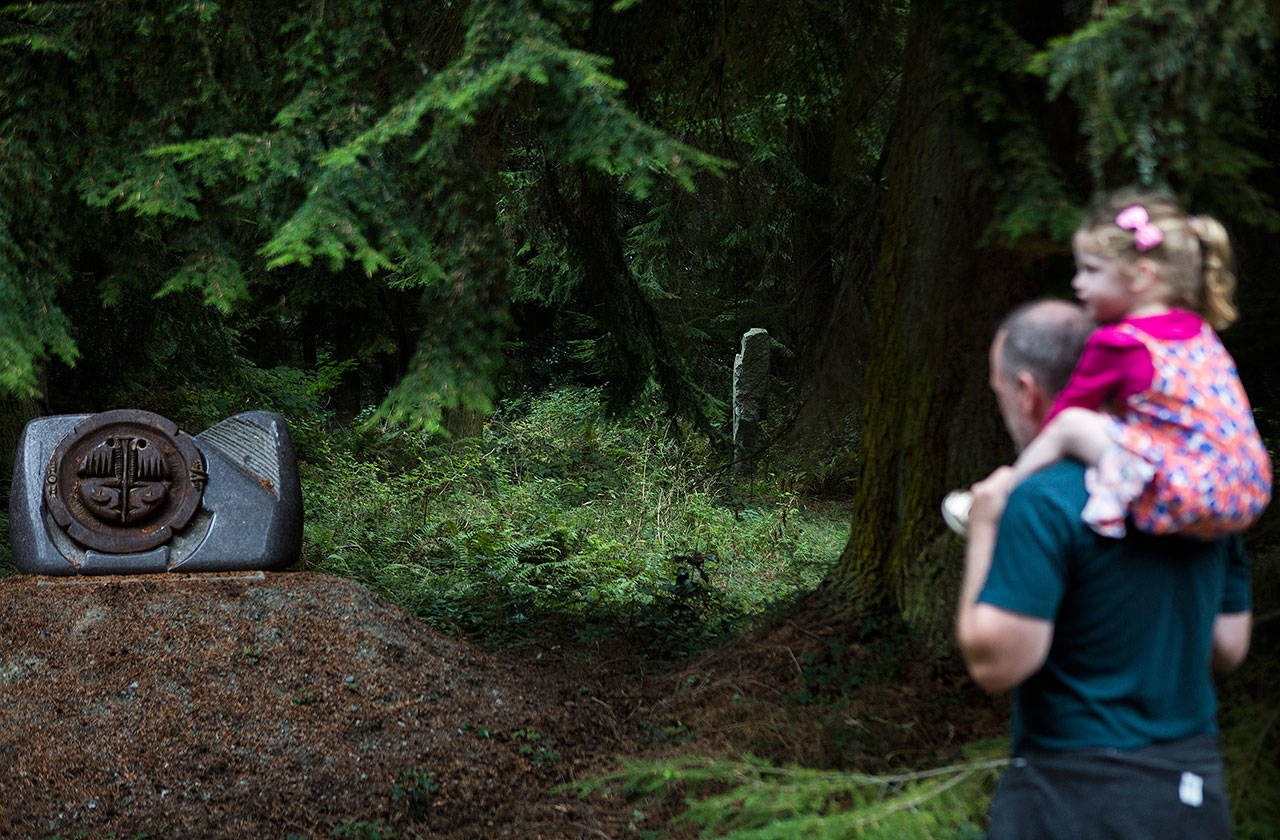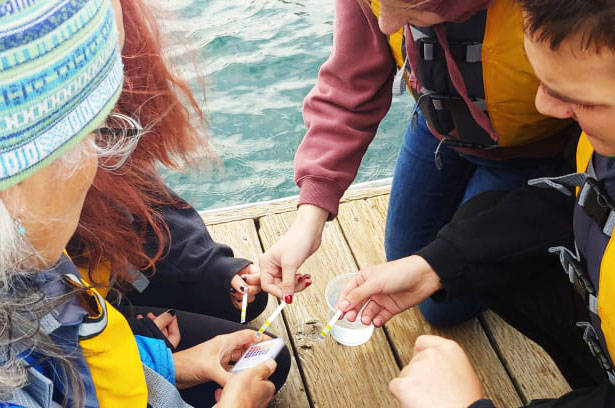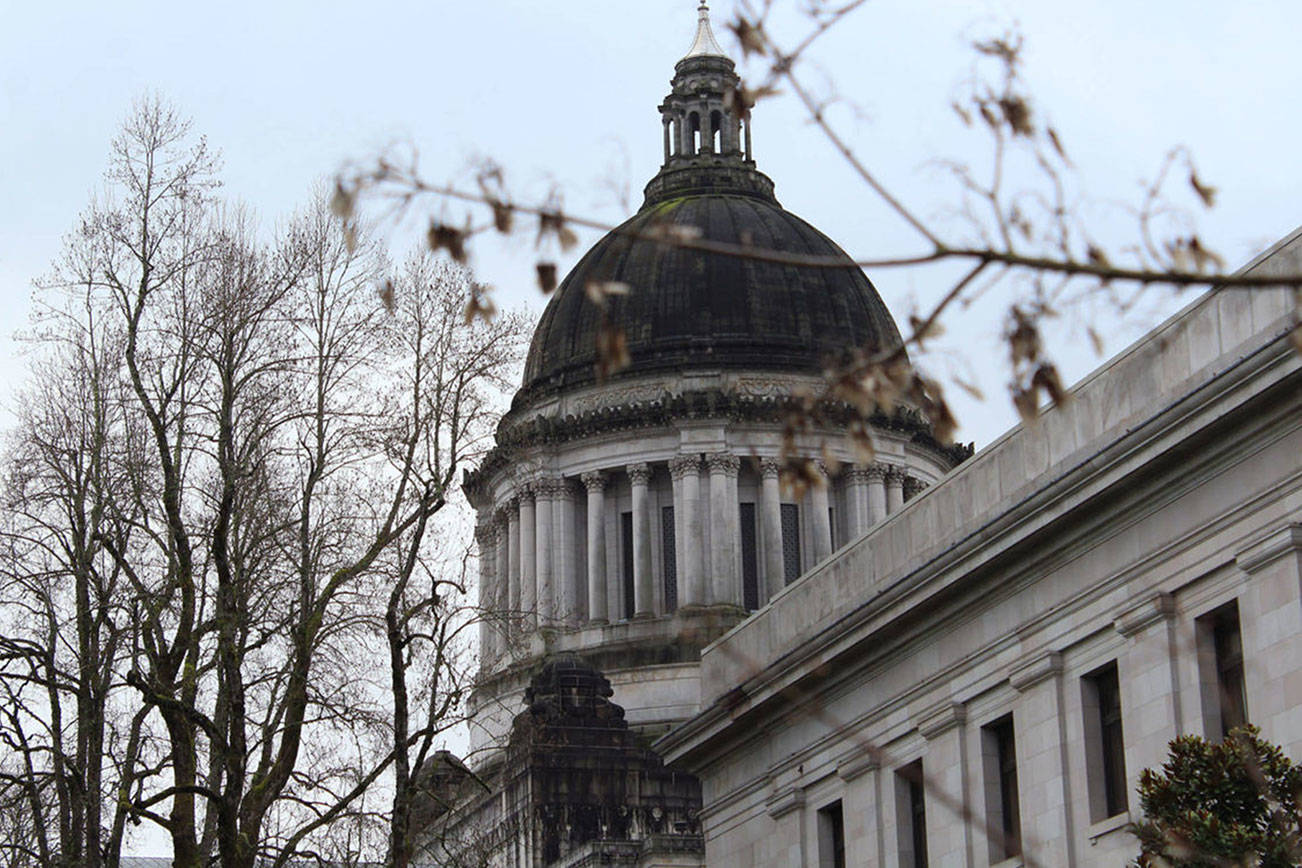By Andrea Brown
If the polished granite sculpture outside Whidbey Art Gallery in downtown Langley doesn’t make you blink, the price might.
The 2-foot-tall abstract statue titled “Princess Ixchel” is the price of a Prius.
What’s up with that?
The $23,000 carved stone is by artist Henry “Hank” Nelson, and it’s just sitting out on the sidewalk next to potted plants.
A half-block away, in front of the Langley Chamber of Commerce, is Nelson’s 1,000-pound sculpture titled “Wazmini III Courting His Bride” on loan for the city’s public art program.
It’s a lightweight compared to others he has created. There are hundreds more where it came from, including an 8-foot, 25,000-pounder.
Many of Nelson’s works are nothing you’ve ever seen, though there is one at Everett’s Evergreen Arboretum & Gardens, but here’s your chance. Two weekends a year, his private Cloudstone Sculpture Park opens to the public.
On Saturday and Sunday, you can meet the 81-year-old sculptor whose work is as bold as he is reclusive.
Langley is a tease compared to what awaits at Cloudstone. It’s more of a surreal adventure.
Throughout the 20-acre park are sections of fabricated steel, pyramids of repurposed earthworks and stone masterpieces. One area represents somber ruins after a nuclear bomb. An indoor gallery has intricate cast bronze statues.
First, though, you have to find Cloudstone, which is down some curvy lanes west of Freeland.
“People who are living on the island for years say they have driven by Cloudstone Road a thousand times and had no idea what’s up at the top,” said Burt Beusch, a board member, docent and weed-puller at Cloudstone.
Beusch was the City Council liaison for Langley’s arts commission when he met Nelson and joined the effort to make Cloudstone an educational center.
“It’s world-class and here he is, sitting in Freeland at the top of the hill, minding his own business. He lives simply and uses money to buy more materials,” Beusch said.
Nelson and his wife, Deborah, bought the Cloudstone property in 1993 and spent three years clearing the brush. He envisioned a small sculpture garden on the rolling grounds with trees and ponds. She died in 2006. He lives there alone.
“We’ve inventoried more than 400 pieces,” Beusch said. “There are sculptures as small as a chair and as large as a truck.”
The range of Nelson’s work is stunning.
You might question whether all were done by the same two hands.
They were.
You might wonder if he has multiple personalities.
He doesn’t.
Nelson is gracious and soft-spoken.
He grew up on a ranch in Arizona.
“I acquired a solid foundation in stonework from building rock walls, shaping and lining canyons, and assembling causeways,” he wrote in his artist statement. “Travels abroad influenced me greatly: temples in India, castles in Europe, and intriguing stone villages everywhere.”
Though mostly self-taught, he worked with a master stone carver in Italy and later in the University of Washington iron foundry.
“My cast iron phase was in the ’80s when I worked at a foundry learning the principles of casting,” Nelson said. “My granite phase started in the 1990s. Up until that time, I was strictly soft stone and then eventually knew I had to get into a different material, something I could place outside. With granite, there was not weathering like there is for marble.”
He typically doesn’t sketch out a creation. He goes by gut to bring out what was in the stone to begin with.
“You just go into the stone and start carving,” he said. “You either wind up with a pile of granite dust or you end up with something.”
For Nelson, art is not about knocking out the same pieces over and over.
“It’s all experimentation,” he said. “You don’t grow in this profession if you are stagnant. It is very easy to be stagnant and not grow.”
The works reflect ancient warriors and royalty as well as the modern world. There are stone pieces paying tribute to the Twin Towers. Others honor his late wife.
Most pieces in the park don’t show titles, so people can use their imaginations what they are, he said.
Some are part of the park and not for sale, but many are. Small garden sculptures are $85 to $300. His bronzes range from $1,000 to $14,000. The Langley gallery has some tabletop statues inside for a few grand.
Nelson has help welding the larger pieces. A California college student was an art intern last year.
“For me to do my best work I have to be alone,” he said.
His outlet: He goes almost daily to exercise at the Island Athletic Club in Freeland.
“It’s good socialization,” he said.
One reason he agrees to people traipsing around his property is that he wants Cloudstone to be an educational foundation.
As he put it: “The real proof of advancement is whether I have made a spiritual contribution to the universe. Such is the power of stone.”
See for yourself.
While there, make sure to seek out the unassuming, tall guy in jeans and sock hat.
Andrea Brown: abrown@heraldnet.com; 425-339-3443. Twitter @reporterbrown.
Whidbey wonderland
Cloudstone Sculpture Park and Gallery will be open from 10 a.m. to 4 p.m. on April 27 and 28. The address 5056 Cloudstone Lane, Freeland.
The next weekend open is in August.
Cost is $10 per person or $35 for a group of four.
Private tours are available by emailing tour@cloudstonesculpture.com.
To volunteer, email volunteer@cloudstonesculpture.com.
More info: www.cloudstonesculpture.com/
Video: https://whidbeytv.com/videos/cloudstone-sculpture-park
Nelson in Everett
A piece “Love at First Sight” is on long-term display in the sculpture garden at Evergreen Arboretum & Gardens in Everett’s American Legion Memorial Park, 145 Alverson Blvd.
